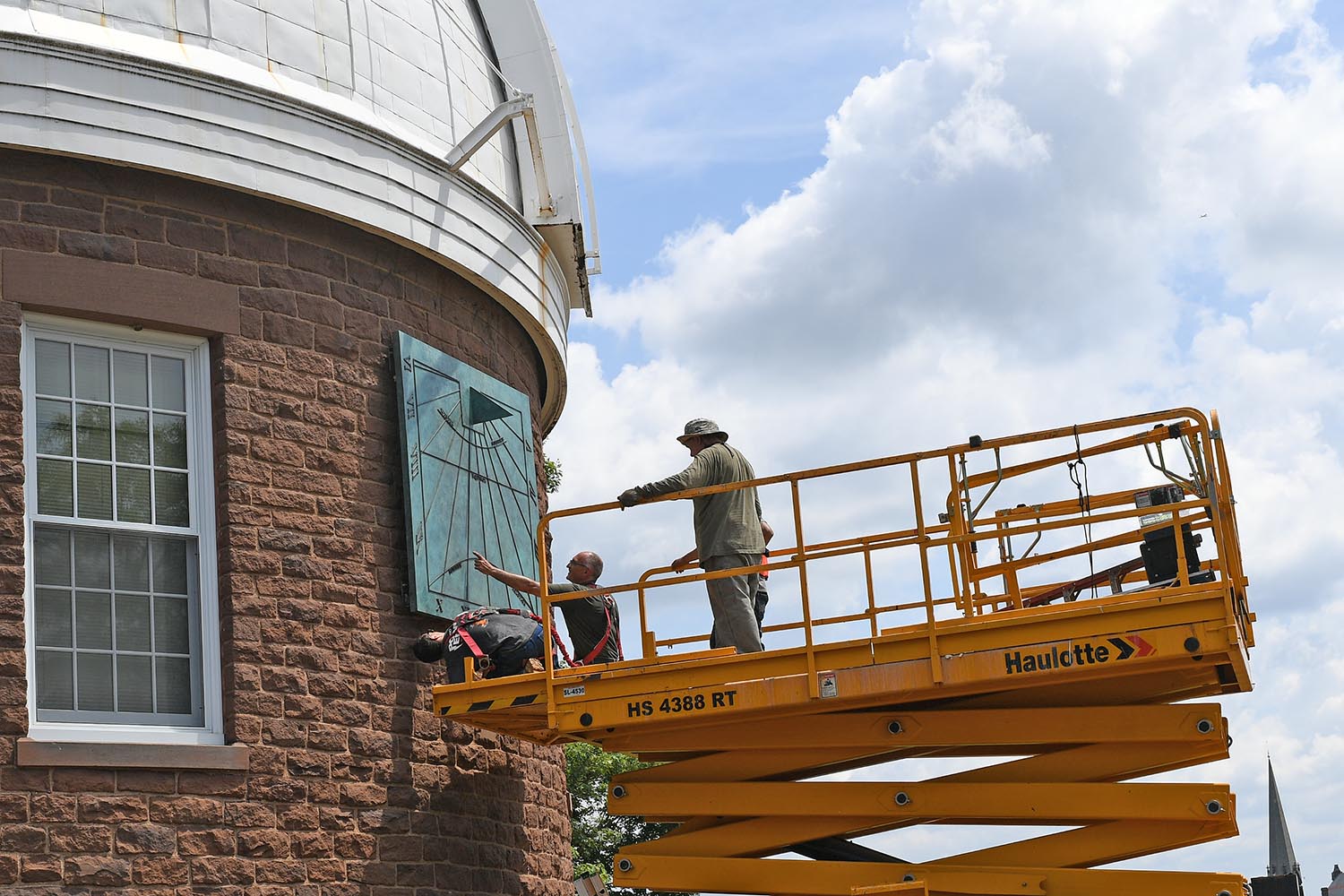 The Van Vleck Observatory has received a new sundial. In the Wesleyan news letter article by Olivia Drake who interviewed provost Joyce Jacobsen who said, "Campus doesn’t have enough outside art. A sundial is a perfect piece because it’s not only aesthetically pleasing but it’s functional too.” (https://newsletter.blogs.wesleyan.edu/2018/07/17/sundial-sculpture-installed-on-van-vleck-observatory/)
The Van Vleck Observatory has received a new sundial. In the Wesleyan news letter article by Olivia Drake who interviewed provost Joyce Jacobsen who said, "Campus doesn’t have enough outside art. A sundial is a perfect piece because it’s not only aesthetically pleasing but it’s functional too.” (https://newsletter.blogs.wesleyan.edu/2018/07/17/sundial-sculpture-installed-on-van-vleck-observatory/)
The 6 x 6 foot Muntz metal bronze sundial with stainless steel reinforcing weighing 650 pounds was carefully installed on the southern face of the 20-inch Clark Refractor dome on Foss Hill, Middletown, CT. The Alvan Clark telescope now open for public viewing was installed in July, 1922. In 1971 the Van Vleck observatory acquired the 24-inch Perkin reflector, housed in a separate dome near the west end of the old observatory building. (http://www.wesleyan.edu/astro/van-vleck/history.html)
The July 16th, almost exactly 96 years since the installation of the Clark telescope, the dome was graced by a sundial. Installation was supervised by the designer and creator, Robert Adzema (standing on the platform). He visited the campus multiple times with paper and wooden models seeking the right esthetic design. The final dial design is a true south declining sundial (notice the equinox line is parallel to the ground) but the hour lines are corrected for the longitude 72° 39.5585' W such that mean noon occurs 9m 22s after local mean noon. Hence a slight counter-clockwise twist to the hour lines (the 6am hour line is slightly below the horizontal). The shadow of the gnomon's tip traces the solstices and equinox. "I wanted the design to look timeless and in keeping with the classical nature of the building,” said Adzema. In Drake's article Adzema further commented on the patina of the bronze dial, saying, "I chose this green because it is the natural color bronze would oxidize over time. It is also a shade that looks great against the color of the observatory’s brownstone walls...The biggest difficulty was achieving the patina, which had to be applied by heating the surface of the dial and applying various chemicals and acids.”https://newsletter.blogs.wesleyan.edu/2018/07/17/sundial-sculpture-installed-on-van-vleck-observatory/
